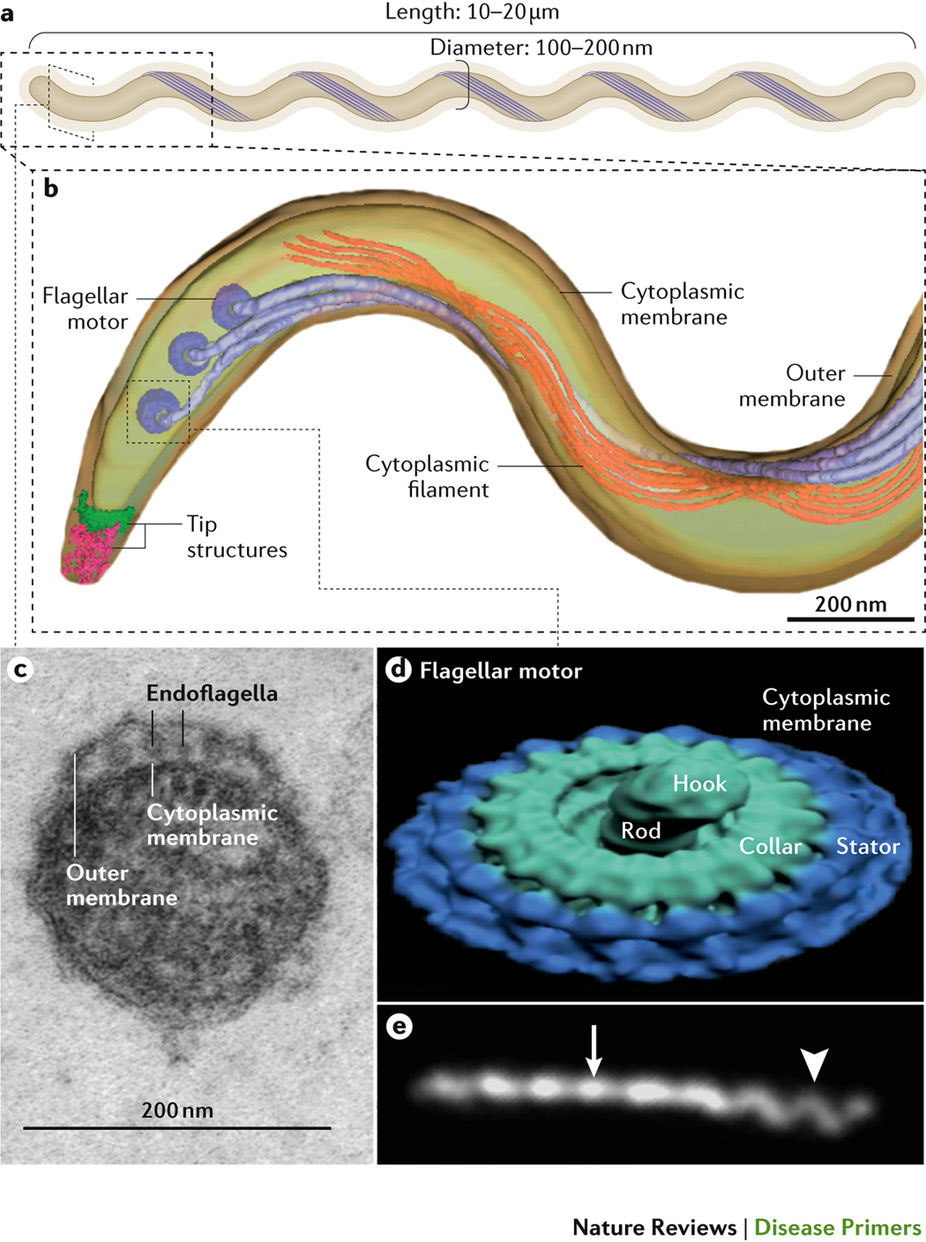梅毒
Syphilis
2017年10月12日 Nature Reviews Disease Primers Article number: 17073 (2017) doi: 10.1038/nrdp.2017.73

梅毒は、梅毒トレポネ−マ(T. pallidum)が性行為や妊娠中の垂直感染を介して感染する感染症である。梅毒トレポネ−マが強い侵襲性と免疫回避能を有することはよく知られている。増殖したスピロヘータに対する局所炎症反応によって臨床症状が現れるが、他の疾患の症状に似ているものも多い。スピロヘータの潜伏期間は長く、その間、宿主には兆候も症状も現れないが、感染性は維持されている。簡便な診断検査だけでなく、単一用量の長時間作用型ペニシリンによる有効な治療が行われてはいるが、とりわけ、高所得国や中所得国の男性同性愛者(MSM)の間で、梅毒が世界的公衆衛生問題として再浮上している。発展途上国では、梅毒によって、毎年、数十万例規模の死産および新生児死が起きている。一部の低所得国では、WHOが設定した先天性梅毒に対する排除目標に到達した例も存在するが、HIV感染したMSMでの梅毒の有病率の増加が驚異的であることを踏まえると、梅毒トレポネ−マは非常に強力な病原体と考えるべきである。梅毒を最優先の世界的健康問題として確立させるには、強力な権利擁護と地域社会の参画が求められる。診断方法の改良をはじめ、治癒判定法の改良、公衆衛生対策の強化、MSMのHIVと梅毒の相互作用に関する研究に加えて、最終的にはワクチン開発への投資がさらに必要である。
PrimeView
梅毒は、梅毒スピロヘータ(梅毒トレポネ−マ)が性行為や垂直感染を介して感染する感染症である。このPrimeViewでは、梅毒が、毎年、数十万例規模の死産および新生児死の原因になっていることを踏まえて、母子感染の排除を目的とした妊婦のスクリーニングの重要性を中心に解説する。
本Primerの図解サマリー
Treponema pallidum subspecies pallidum (T. pallidum) causes syphilis via sexual exposure or via vertical transmission during pregnancy. T. pallidum is renowned for its invasiveness and immune-evasiveness; its clinical manifestations result from local inflammatory responses to replicating spirochaetes and often imitate those of other diseases. The spirochaete has a long latent period during which individuals have no signs or symptoms but can remain infectious. Despite the availability of simple diagnostic tests and the effectiveness of treatment with a single dose of long-acting penicillin, syphilis is re-emerging as a global public health problem, particularly among men who have sex with men (MSM) in high-income and middle-income countries. Syphilis also causes several hundred thousand stillbirths and neonatal deaths every year in developing nations. Although several low-income countries have achieved WHO targets for the elimination of congenital syphilis, an alarming increase in the prevalence of syphilis in HIV-infected MSM serves as a strong reminder of the tenacity of T. pallidum as a pathogen. Strong advocacy and community involvement are needed to ensure that syphilis is given a high priority on the global health agenda. More investment is needed in research on the interaction between HIV and syphilis in MSM as well as into improved diagnostics, a better test of cure, intensified public health measures and, ultimately, a vaccine.

